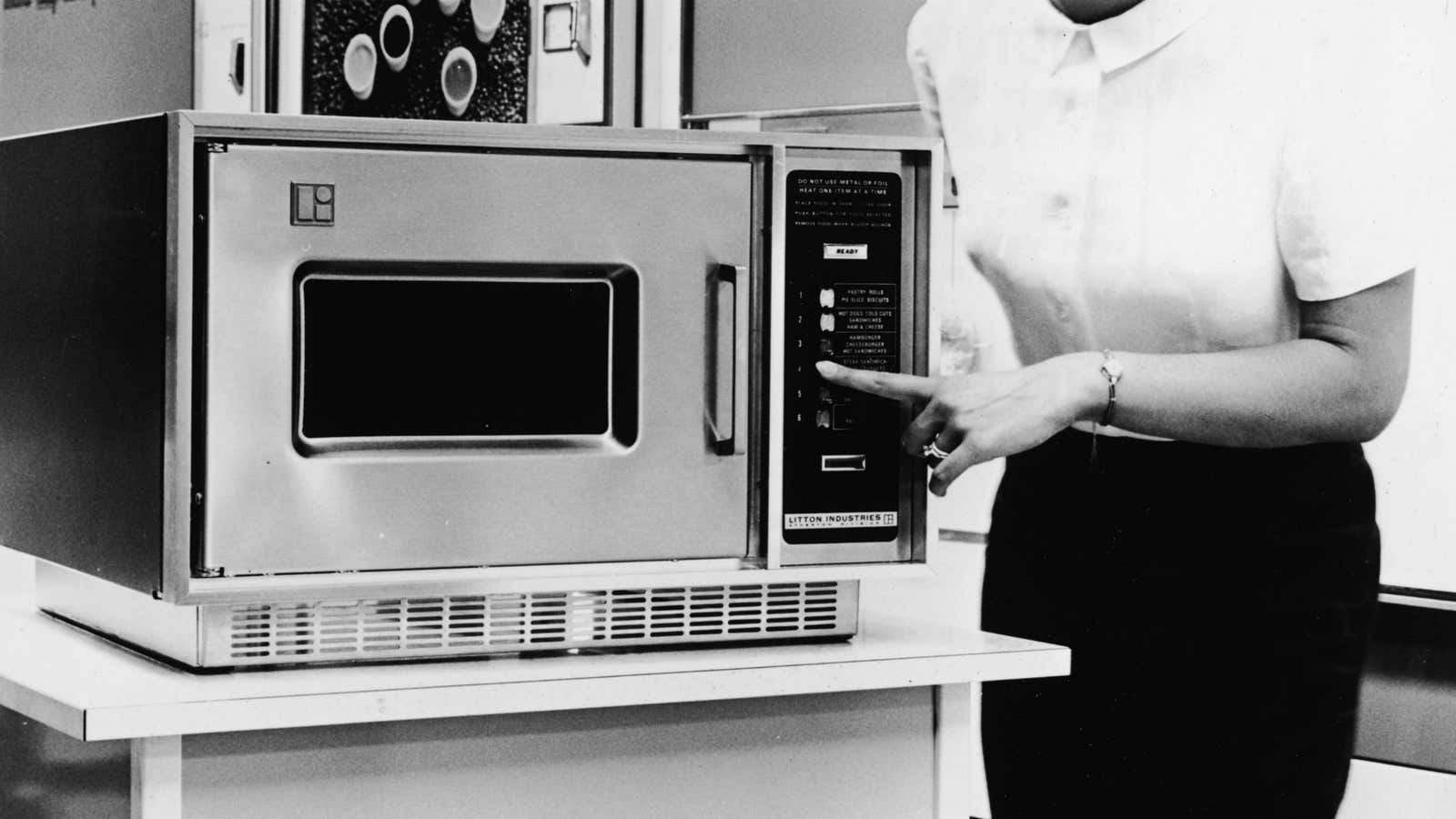America is tired of the microwave.
Microwave sales have fallen or remained flat every year for nearly a decade in the US. Unit sales have tumbled by 25% since 2000, and 40% since their peak, in 2004.
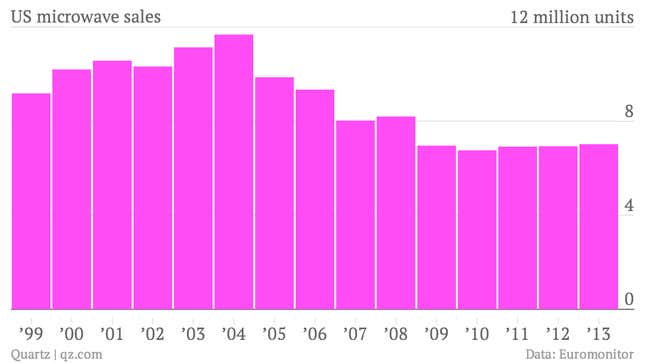
The waning popularity of the American microwave deserves a closer look. For 40 years, Americans bought microwaves by the millions, and more of them each year. Some 90% of American households now own a microwave, according to the US Bureau of Labor Statistics.
That broad market penetration is likely one reason that sales have tailed off. Why buy a new microwave if your old one still works? But sales of toaster ovens—which have similar market penetration and product longevity—have boomed since 2000. Last year, shipments of other kitchen appliances rose by nearly 8% while microwave shipments fell another 5%, according to data from market research firm Mintel. And microwaves were already in the vast majority of American households and offices for more than 10 years before their sales topped off.
A bigger factor behind the decline in sales of microwaves is likely that Americans just aren’t using them as much anymore. A shift in eating habits—which favors freshness and quality over speed and convenience—has left a growing number of microwaves dormant on kitchen counters.
“Microwaves have sort of had their day,” says John Owen, a senior industry analyst at Mintel.
A new kind of cooking
The microwave, like many ingenious inventions before it, was birthed by mistake.
Before microwave radiation melted cheese, it served as the magic behind radars, which sent microwave signals out to objects to gauge their distance. But in 1945, Percy Spencer, an engineer at Raytheon, the maker of the first microwave, noticed something peculiar while experimenting with the technology. The high-powered radar turned a chocolate bar in Spencer’s pocket into goo. He then deliberately experimented with—you guessed it—popcorn. And it worked. Next, he tried an egg, which promptly exploded (onto a nearby coworker, as the story goes.)
“The microwave energy is like rubbing your hands together, only it rubs the molecules of food together as they are vibrating three thousand million times a second,” Norman Krim, a former vice president at Raytheon explained in a documentary about the device.
Shortly after Spencer’s discovery, Raytheon invested heavily in developing the first commercial microwave. It was called the Radarange, and it was ridiculously powerful. It could, according to its manual, fry an egg in only 12 seconds. But it was also the size of a refrigerator, stood almost six feet tall, weighed over 700 pounds (320 kilograms), and cost $3,000.
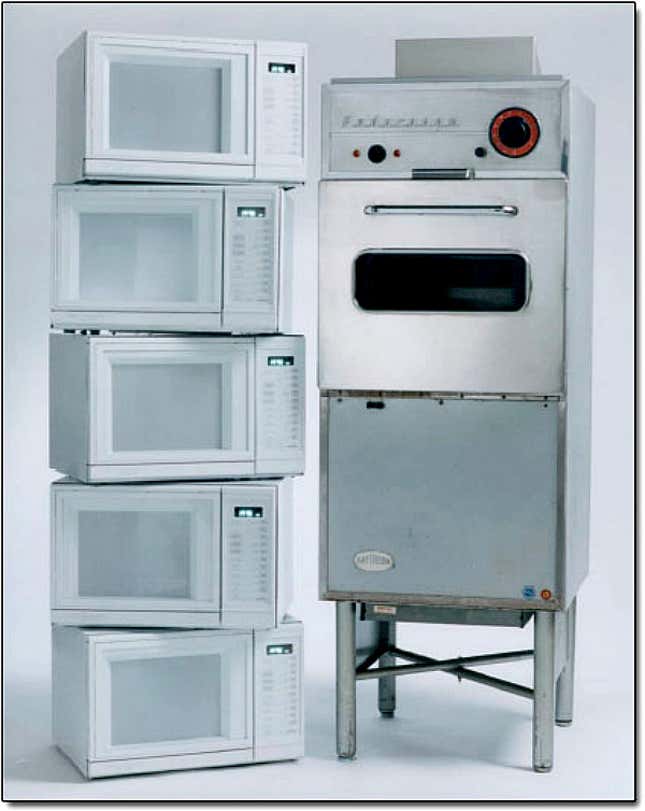
Given its hefty size (and price), the world’s first microwave was almost exclusively used on ships and trains, and at restaurants, where food needed to be prepared efficiently for many people. A separate slightly-less-bulky and cheaper version was developed in 1955 for the home. But it was still too big, and at $1,300, too expensive for mass use.
The microwave goes mainstream
In 1967, after nearly 20 years of selling the devices to commercial establishments rather than households, Raytheon finally developed something much closer to the countertop model found in kitchens across America today.
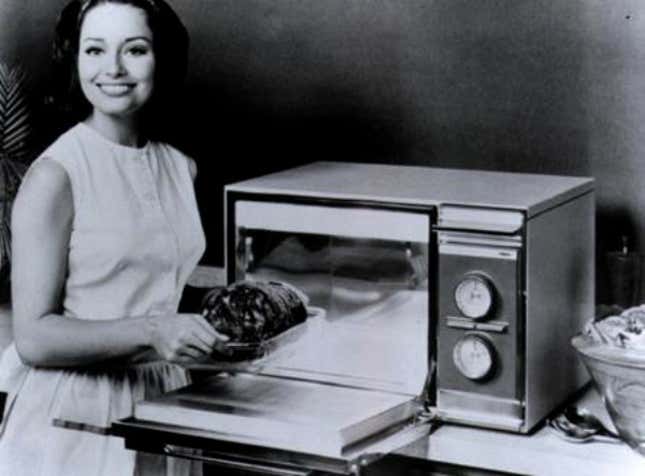
This one cost a more modest $500, was heavily marketed, and gave way to a new generation of microwaves that eventually sold broadly. By the end of the 1970s, more than 20% of households had one. “It made a cook’s life easy,” an ad boasted at the time:
It also gave rise to entire industries
Like, say, the microwavable popcorn industry.
In the early 1980s, while microwave sales were booming, Orville Redenbacher brought the first microwavable popcorn to the market. And America liked it. Over the next dozen years, popcorn sales climbed more than 100%, according to data from the American Popcorn Board.
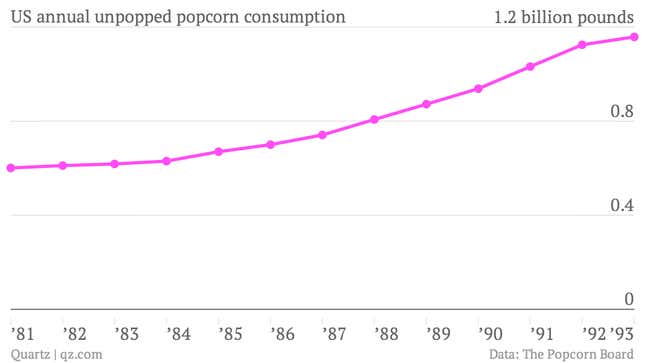
By 1995, 65% of the more than one billion pounds of popcorn Americans ate was of the microwaveable kind. Today, largely thanks to the microwaveable popcorn boom, the average American eats about 52 quarts of popcorn per year, according to the Agricultural Marketing Resource Center.
But microwaves were being used for far more than corn kernels. By 1987, more microwaves were being shipped in the US each year (12.5 million) than refrigerators (seven million), according to the Association of Home Appliance Manufacturers. By 1993, over 80% of American households, and more than three-quarters of American workplaces had a microwave, according to the Campbell Microwave Institute. The microwave’s meteoric rise is nicely visualized in this New York Times graphic from 2008 (the black line representing microwaves starts around 1970.)
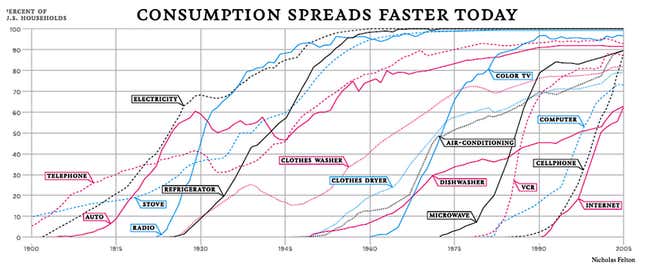
In 2006, a Pew Research survey (pdf) found that the only consumer products Americans considered more essential than the microwave were cars, washing machines, dryers, and air conditioning. There were more than 95 million microwaves in the US at the time, according to the Association of Home Appliance Manufacturers. That same year, microwave sales topped $3.7 billion.
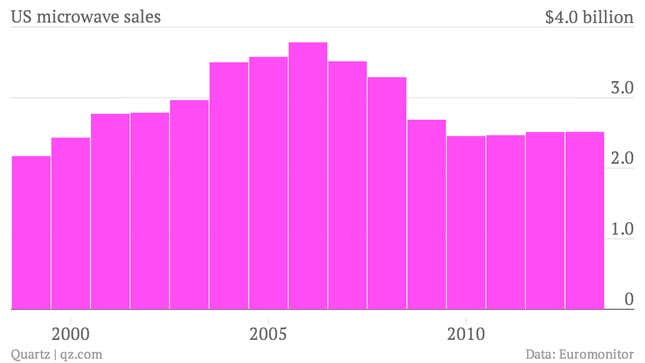
The dropoff since then is even more pronounced for countertop microwaves, the kind Americans keep in their home kitchens. Sales of those peaked in 2001, and have almost halved since.

TV dinner? No thank you
What’s going on? It doesn’t help that some portion of the American public has retained concerns about radiation emitted by the ovens and the possibility that they lower the nutritional value of foods.
The lingering fear is such that the New York Times felt the need to debunk it back in 2006. And CNN felt the need to do it again, this year.
But, more significantly, Americans are getting pickier about what they put in their bodies. And the kind of food that calls for microwave cooking isn’t cutting it.
“The health argument has as much, if not more, to do with the actual foods people prepare in the microwave,” Howard Telford, an industry analyst at Euromonitor, tells Quartz. “The quality of microwavable foods carries a pretty negative stigma.”
Take frozen ready meals, for instance—the sort that Americans have long either been heated up in the oven or, much more conveniently, in the microwave oven. After nearly 60 years of sustained growth, frozen ready meal sales have started to dip. Since 2008, they have either fallen or come in just about flat.
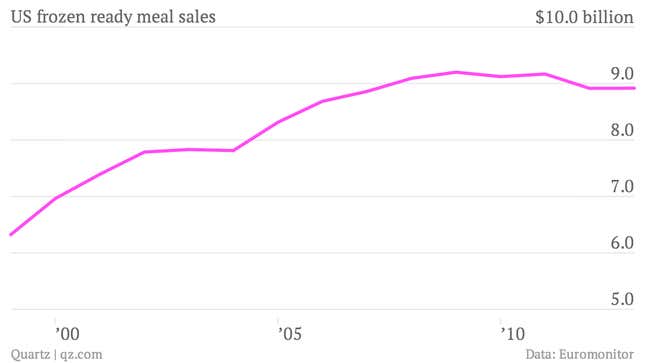
“As people become more health conscious, and more interested in cooking ‘fresh,’ that’s not helping microwaves,” Owen said. “It’s leading to lower sales.” The interest in cooking is more than a movement; it’s a national phenomenon. Even major grocery chains have noted upticks in sales as a result.
Growth in sales of microwavable popcorn are also slowing, while sales of ready-to-eat popcorn are growing at an over 11% clip. Why microwave junk food when you can get it pre-popped? Americans are at once too patient and too lazy to use their microwaves these days.
The competition for countertop space is getting fierce, too
Microwaves aren’t cool anymore.
A heightened interest in haute cuisine has boosted the popularity of alternative kitchen gear, like slow cookers, crock pots, griddles, and rice makers. The small appliance category, which includes those and others, has grown by more than 50% since 2000.
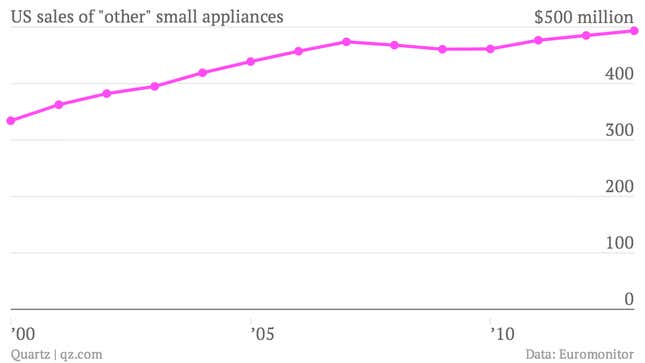
As those niche kitchen appliances have grown, they’ve begun to crowd the kitchen, and elbow the microwave into a corner (or, worse, closet.) “We’ve seen significant growth in slow cookers, rice cookers, and other kitchen devices,” says Telford. “Generally speaking, there’s just more competition for countertop space these days. That’s bad news for the microwave.”
There has also been a boom in demand for what’s arguably the microwave’s closest kitchen competitor. Toaster ovens have been on a tear—they’re up 80% since 2000.
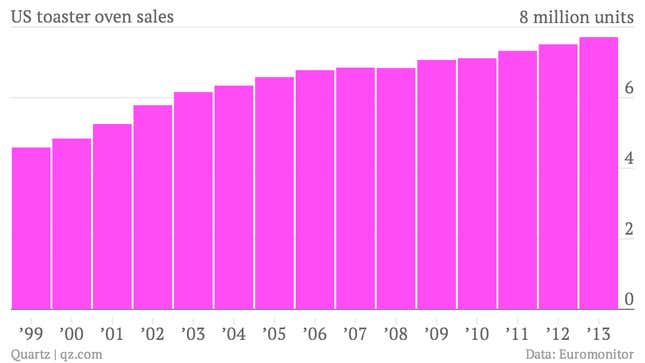
“Microwaves are becoming less central to the way people cook,” says Owen.
So the microwave’s goose is cooked?
Not exactly.
New microwave sales may be falling, but microwaves are still in over 90% of American households. Americans aren’t throwing out the ones they have; they’re merely using them less and buying new ones less frequently. Couple that with the fact that technology is helping extend microwave lifespans, and the result is that people don’t have to replace them nearly as often as they once did. ”The replacement cycle is growing, partly because the technology is getting better, but also, and perhaps most importantly, because people aren’t turning them on as often anymore,” says Telford.
Microwaves are also, in some ways, moving upscale. Sales of built-in microwaves—which are built into the kitchen rather than sitting standalone on a counter, and are much closer cousins to the commercial oven—have grown by more than 100% since 2000. (We reached out to Whirlpool, one of the biggest manufacturers of US household appliances including microwaves, for its take on the issue—but it didn’t respond to our requests for comment. Update: Whirlpool declined to comment.)
As for the classic countertop microwave, Americans’ lack of enthusiasm may be the start of a slow, drawn-out decline.
“It’s pretty hard to see what would turn that mindset around,” says Owen. “I’m not sure there is anything out there that will.”
